Landscape
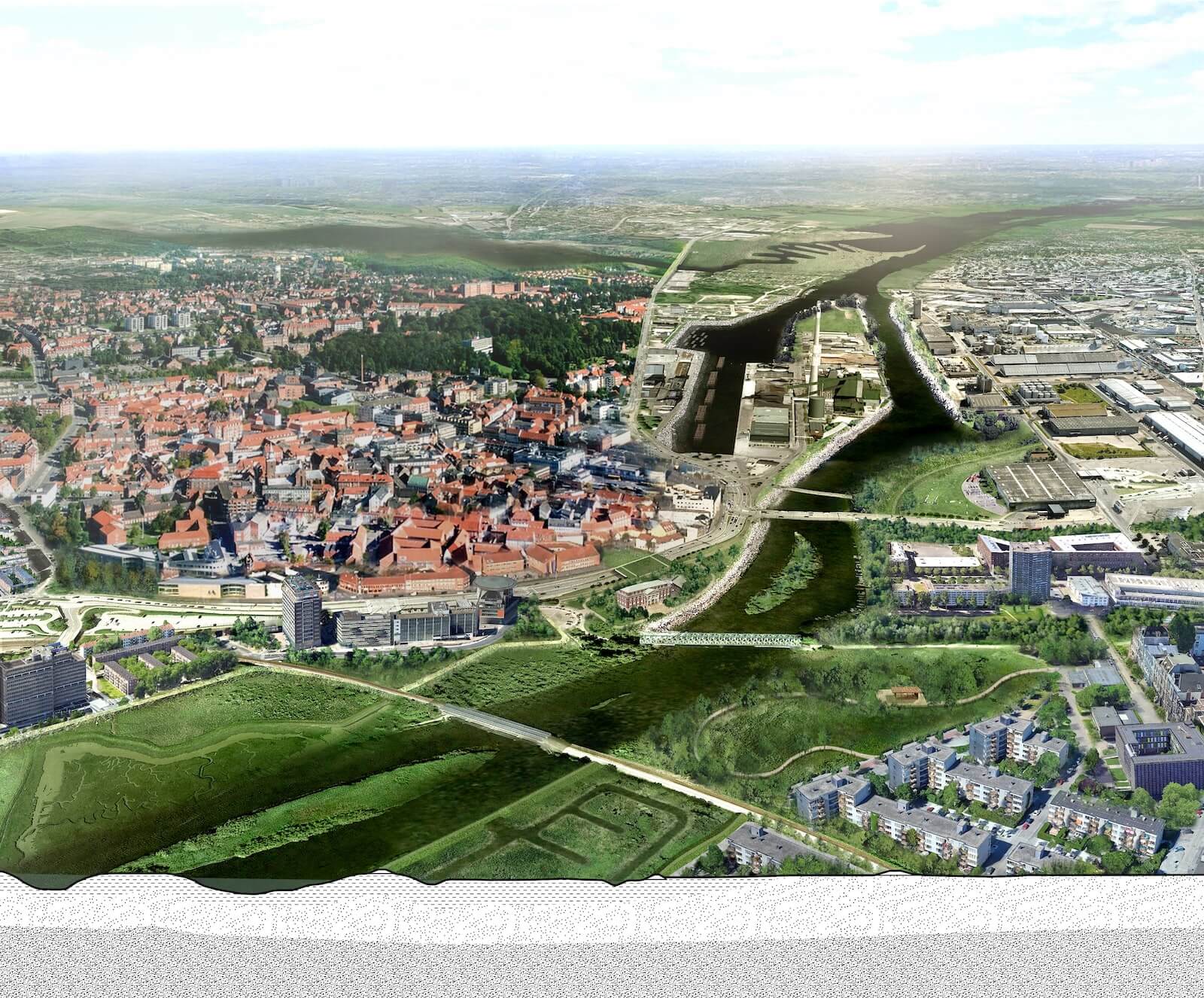
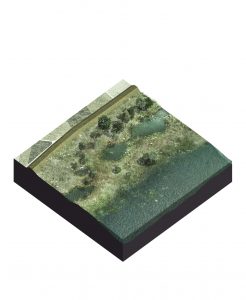
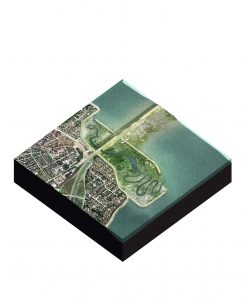
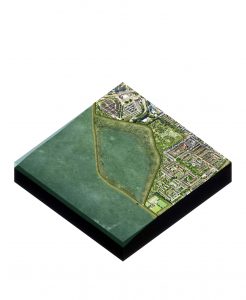
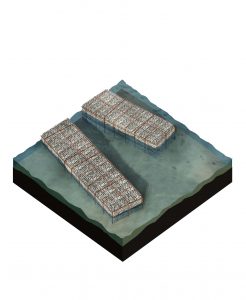
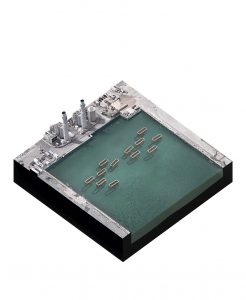
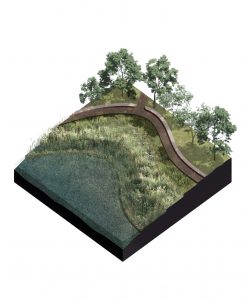
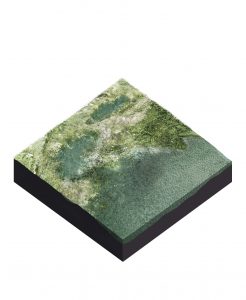
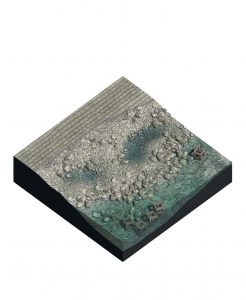
The relationship between cities and their waterways is the origin point for the development of civilizations. The capacity for navigation, trade, and consequently the exchange of knowledge and ideas, has been fundamental to the growth of urban centers. Today, four billion people live in urban areas, representing more than half of the global population. By 2050, estimates project that cities will add another 2.5 billion residents.
Since industrialization, the urban-water interface has been increasingly mediated by mono-functional gray infrastructure such as flood control barriers, piped stormwater infrastructure, and straightened and hardened shorelines. While these efforts yielded certain short-term economic benefits, circumscribing space for nature and living systems has been detrimental in the long-term. The impact of climate change adds urgency to redesign the urban-water landscape. Increasing average temperatures, changes in precipitation, more frequent extreme weather events, and sea level rise exacerbate existing challenges including flooding, pollution, heat stress, drought, and biodiversity loss.
The Building with Nature approach to planning for water in cities recognizes and responds to the changing climate by embedding resilience in natural systems and infrastructure. Dense living and high land values in cities create both the need and appreciation for the benefits that Nature-based Solutions can supply. A robust and reconnected network of green and blue elements can provide additional flood storage, temper extreme heat, recruit plants and animals, and support public health.
Ecological Benefits
City dwellers have historically prioritized urban development over natural infrastructure. Nonetheless, cities contain abundant opportunities to water-based systems in ways that support ecological processes, increase natural connectivity, and sustain biodiversity. These functions play a role in safeguarding human health and sustainability. Waterways and water bodies supply the greatest ecological benefits when restoration and enhancement projects treat them as part of a network of larger systems and landscapes: canals linked to parks; streetscapes that integrate built and natural elements; rivers, wetlands, and marshes seamlessly connected to their watershed. Blue corridors enable the greatest ecological benefits when they also link to green upland features and systems.
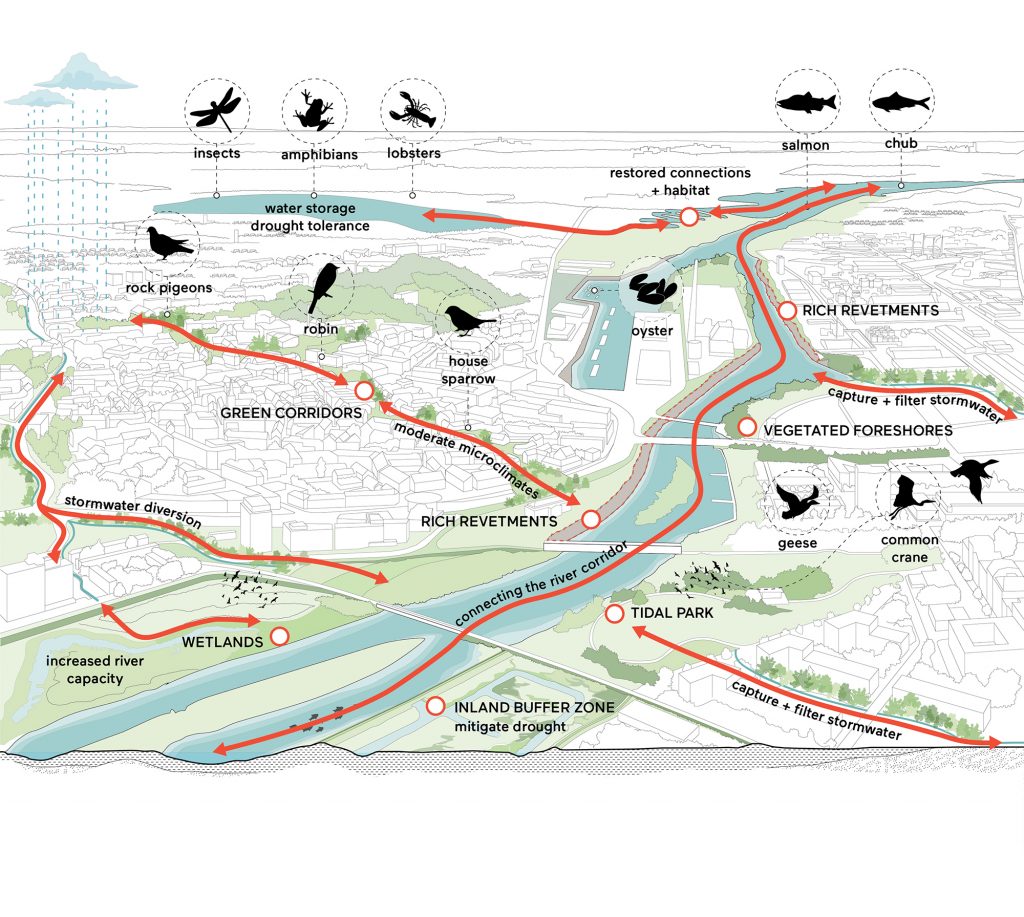
Places to live, work and visit
Cities are dynamic environments where water and open space intersect with commerce, living, and leisure. The demands and pressures on urban space require an approach to nature development that is multi-functional and linked to social and economic benefits for residents, workers, and visitors. The revitalization of urban waterways and waterbodies can improve water quality, mitigate flooding, and reduce urban heat island effect. Enhanced blue-green networks contribute to livability by increasing aesthetic and cultural value and providing community amenities. Not least, rethinking water in cities can stimulate investment, create employment opportunities, and benefit public health through improved air quality, moderating climate extremes, and making new space for recreation. Building with Nature brings focus to work that reaps multiple benefits for plants, animals, and people. It creates learning opportunities by making natural processes such as tidal fluctuations visible and connecting neighborhoods to waterfront open space. At the same time, it is a tool for education, discovery, and equity.
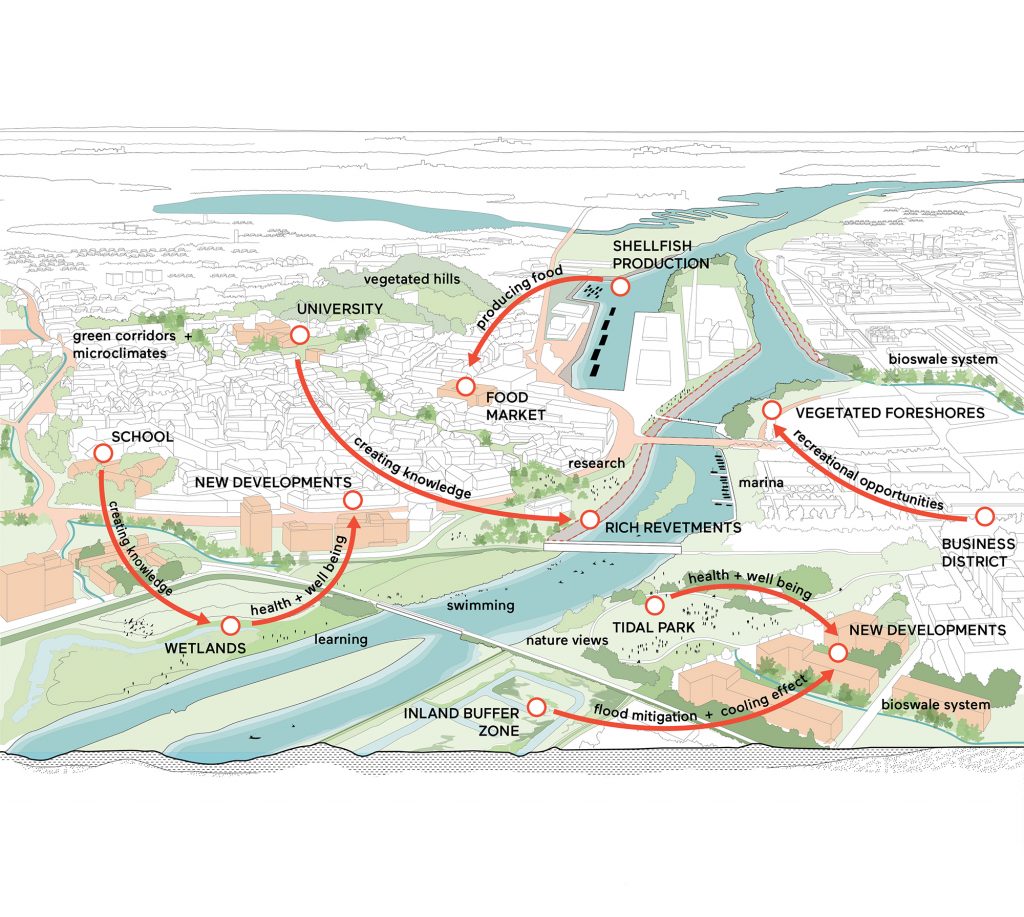
Resource Flows
Urban environments endure enormous pressures and spatial limitations. Their high land costs demand creative thinking to satisfy multiple objectives for urban living, nature development, and increased value. Building with Nature considers environmental restoration within a context of systems thinking inseparable from its financial, institutional, and social contexts. As cities increasingly adopt circular economy models for sustainable growth, habitat creation and stormwater management strategies can support overarching
goals of carbon sequestration, waste reduction, and investment in natural capital. Managing and restoring urban water systems forestalls flood damage costs and adds measurable benefits. Increases in livability highlight the case for cities to invest in historically low-value areas such as floodplains and to make room for nature in high–value areas. River corridor restoration benefits accrue to upstream and downstream areas, for example through reduced environmental impact and costs. Restoring tidal environments may mitigate
regional flood risks, and in turn reduce infrastructure costs.
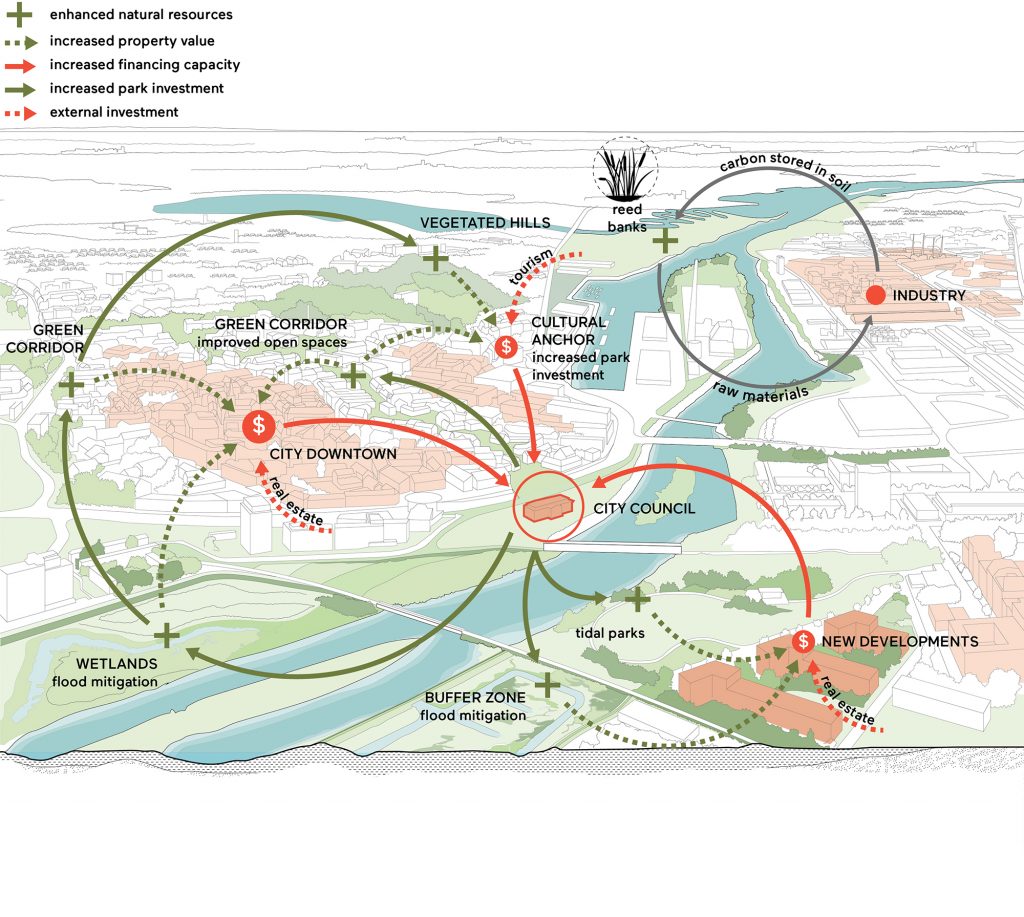
Integrated Approach
Building with Nature can find applications in a range of scales and contexts. Along urban waterways, where large-scale landscape transformation may not be immediately feasible, incremental interventions can begin to leverage the flows of ‘wet’ ecosystems that must cross the city. Creating stepping stones may be the first step. Numerous small interventions may improve alignment with various urban needs, yielding habitat diversity, attractive places to live and work, and increased land values. Finally, staging multiple Building with Nature pilots or small projects in a city helps to advance education, stakeholder development, capacity building, and collaboration. As a new approach to water-related infrastructure, Building with Nature capacity building is critical. While a growing network of institutions and practitioners have documented their findings related to Building with Nature design and implementation, these concepts are relatively novel and unfamiliar to many practitioners, policy-makers, and citizens. It is therefore necessary to bring awareness to Building with Nature strategies while at the same time cultivating the body of knowledge itself. Broad understanding of the program’s potential is critical to upscale implementation. Education, training, engagement, and terminology are all avenues of capacity building that can create a critical mass of experts, supporters, and enablers with a common language and understanding. Online courses extend the reach of Building with Nature concepts to a global audience of students from a range of disciplines and backgrounds.
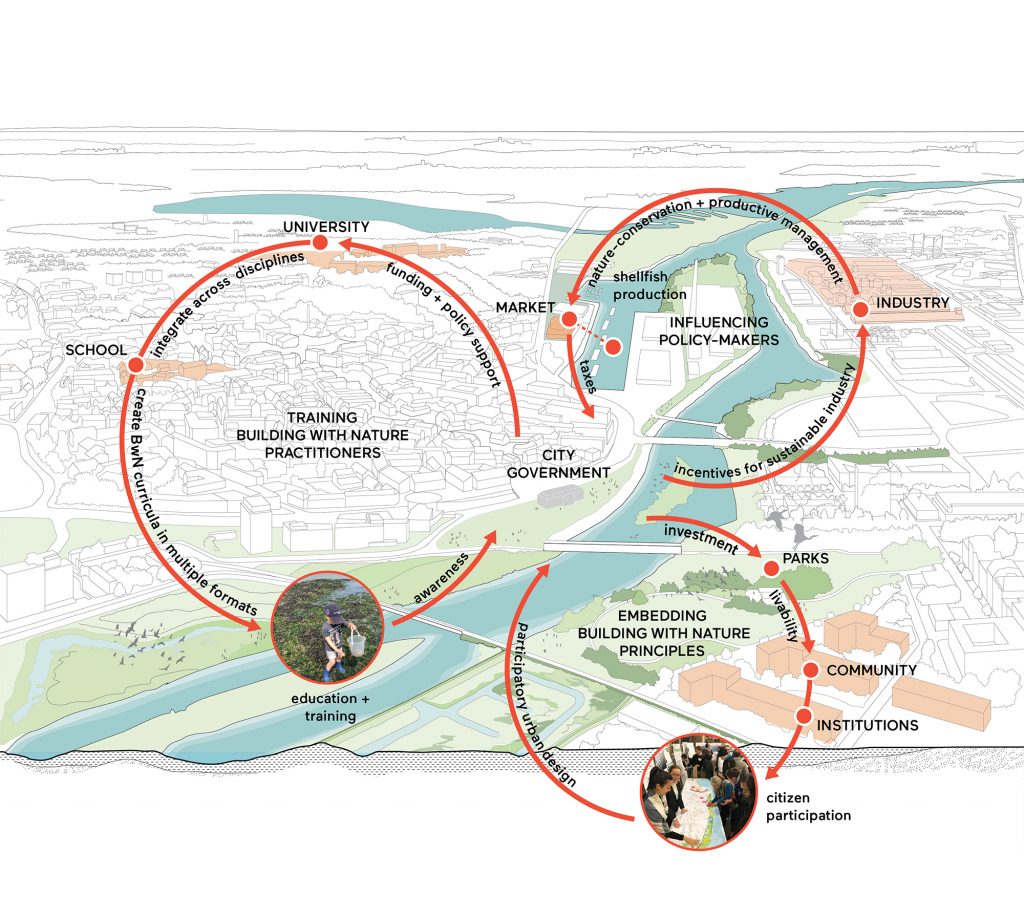
The Details
Get more insight in the driving physical and natural processes that shape lowland lakes, and all the benefits this landscape create by visiting our in-depth landscape description of Ports&Cities.
